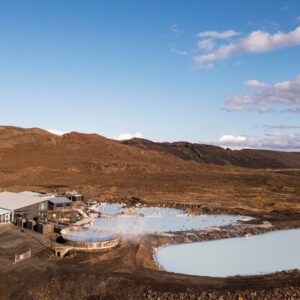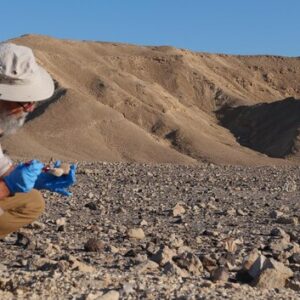Earthing, also known as grounding, is an essential component in electrical installations, providing a low-resistance path to dissipate fault currents and safeguard people and equipment. Among the various materials used for earthing, bentonite powder has gained popularity due to its unique properties and efficiency in enhancing soil conductivity. This article delves into the details of bentonite powder, its properties, and its application in earthing systems.
What is Bentonite Powder?
Bentonite is a naturally occurring clay composed predominantly of montmorillonite, a type of smectite mineral. It is formed from the weathering of volcanic ash and consists mainly of alumina, silica, and water. Bentonite is classified into two main types based on its dominant element:
- Sodium Bentonite: Known for its high swelling capacity and excellent water absorption properties.
- Calcium Bentonite: Exhibits lower swelling properties but still retains significant absorption capability.
For earthing purposes, sodium bentonite is commonly used because of its superior ability to expand and form a conductive gel-like substance when mixed with water.
Why Use Bentonite Powder in Earthing?
The primary purpose of an earthing system is to maintain electrical continuity and a low-resistance path to earth. Bentonite powder is an ideal material for this application due to the following reasons:
- High Moisture Retention:
Bentonite can absorb and retain large quantities of water, maintaining soil moisture around the electrode. This enhances the conductivity of the earthing system, especially in dry or sandy soils. - Low Resistivity:
When hydrated, bentonite forms a highly conductive gel that reduces soil resistivity. This ensures efficient dissipation of fault currents into the ground. - Non-Corrosive and Eco-Friendly:
Unlike chemicals like salt, bentonite does not corrode electrodes or harm the environment. It is a natural material that is safe for long-term use. - Long-Term Stability:
Bentonite’s swelling properties ensure it remains in close contact with the electrode, minimizing the risk of air gaps that can increase resistance. - Cost-Effective:
Bentonite powder is affordable and readily available, making it a practical choice for large-scale earthing systems.
Applications of Bentonite Powder in Earthing Systems
Bentonite is commonly used in the following scenarios:
- Electrical Substations:
Ensuring the safety of high-voltage installations by improving soil conductivity. - Telecommunication Towers:
Protecting sensitive communication equipment from lightning and electrical surges. - Solar Power Systems:
Enhancing the grounding efficiency of solar panel installations in areas with high soil resistivity. - Wind Turbines:
Providing a reliable grounding system for turbines located in remote or rocky terrains. - Industrial Facilities:
Safeguarding heavy machinery and equipment from electrical faults.
How to Use Bentonite Powder for Earthing
The application of bentonite powder in earthing systems involves several steps, ensuring proper preparation and installation. Here’s a step-by-step guide:
1. Site Preparation
- Identify the location for the earthing electrode installation.
- Conduct a soil resistivity test to assess the existing conductivity and determine the amount of bentonite required.
2. Digging the Earth Pit
- Dig an earth pit of suitable depth, typically 2–3 meters, depending on the soil condition and electrode type.
- Ensure the pit is wide enough to accommodate the electrode and the bentonite mixture.
3. Preparing the Bentonite Mixture
- Mix bentonite powder with water in a ratio of 1:4 (1 part bentonite to 4 parts water) to form a slurry.
- Allow the mixture to swell for a few minutes until it reaches a gel-like consistency.
4. Installing the Electrode
- Place the earthing electrode (copper rod, plate, or pipe) vertically in the pit.
- Pour the bentonite slurry around the electrode, ensuring it fills the gaps between the electrode and the soil.
- If necessary, layer the slurry with additional soil to provide further compaction.
5. Backfilling and Compacting
- After the electrode is surrounded by bentonite, backfill the pit with soil and compact it to eliminate air pockets.
- Water the area to ensure proper settling of the bentonite mixture.
6. Testing and Maintenance
- Test the resistance of the earthing system to ensure it meets the required standards (typically less than 1 ohm for sensitive installations).
- Periodically check the moisture content around the electrode and add water as needed to maintain conductivity.
Advantages of Bentonite in Earthing Over Traditional Methods
| Feature | Bentonite Powder | Traditional Methods (Salt & Charcoal) |
| Moisture Retention | High | Low |
| Longevity | Decades | Requires frequent replacement |
| Corrosion | Non-corrosive | Causes electrode corrosion |
| Environmental Impact | Eco-friendly | Harmful to soil and water sources |
| Cost | Economical in the long term | High due to frequent replenishment |
Limitations of Bentonite Powder in Earthing
While bentonite offers numerous advantages, it also has some limitations:
- Dependency on Moisture:
Bentonite requires regular watering in arid regions to maintain its conductivity. - Swelling and Shrinkage:
In extremely dry conditions, bentonite can shrink, leading to reduced contact with the electrode. - Initial Installation Effort:
Proper mixing and application are labor-intensive compared to traditional materials like salt.
Best Practices for Using Bentonite in Earthing
- Combine with Electrolytic Gel:
For areas with extremely high resistivity, use bentonite in combination with electrolytic earthing gels for optimal performance. - Regular Maintenance:
Periodically inspect and replenish water content in dry climates to ensure consistent conductivity. - Choose the Right Type:
Use sodium bentonite for maximum swelling and water retention capacity. - Follow Standards:
Adhere to local and international earthing standards, such as IEEE 80 or IS 3043, to ensure safety and efficiency.
Also Read: – Bentonite earthing compound
Conclusion
Bentonite powder is a versatile and efficient material for enhancing the performance of earthing systems. Its high moisture retention, low resistivity, and eco-friendly nature make it a superior choice over traditional methods. While it requires proper installation and periodic maintenance, its long-term benefits far outweigh its limitations. Whether for industrial, commercial, or residential applications, bentonite plays a crucial role in ensuring the safety and reliability of electrical installations.






